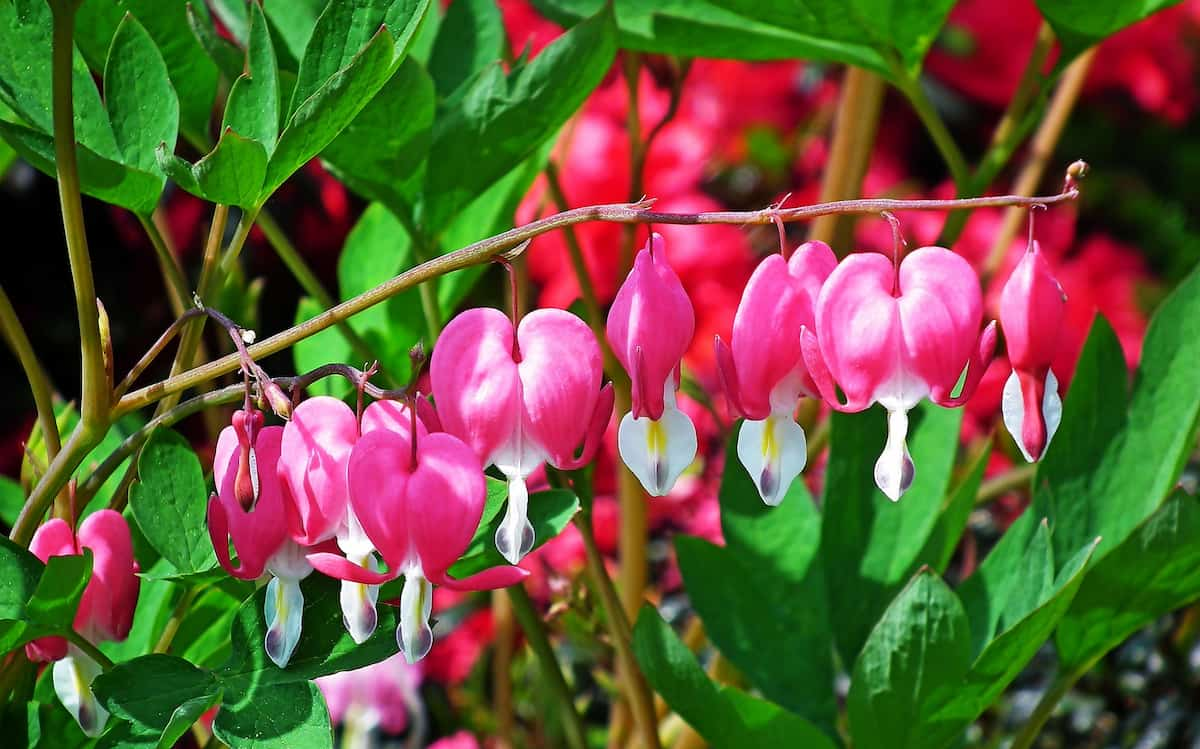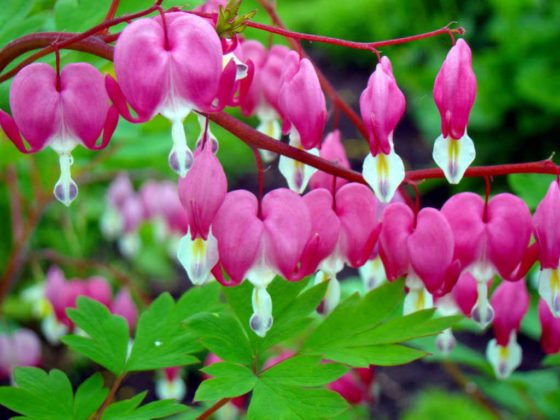Unlocking the Secrets of Bleeding Heart Plant Care
The Bleeding Heart plant, with its delicate, heart-shaped flowers and fern-like foliage, is a charming addition to any garden or indoor space. Its dainty appearance, however, belies the importance of proper care, as Bleeding Heart plants require specific conditions to thrive. By understanding the unique needs of this plant, you can learn how to grow a bleeding heart plant that is healthy, thriving, and beautiful. Whether you’re a seasoned gardener or a beginner, growing a Bleeding Heart plant can be a rewarding experience, and with the right guidance, you can enjoy its delicate beauty for years to come. With proper care, Bleeding Heart plants can grow up to 3 feet tall and 18 inches wide, making them a stunning addition to any garden or indoor arrangement.
Choosing the Right Environment for Your Bleeding Heart Plant
When it comes to growing a Bleeding Heart plant, one of the most critical factors is providing the right environment. Bleeding Heart plants thrive in partial shade to full shade, making them an ideal choice for gardens or indoor spaces with limited direct sunlight. In terms of temperature, they prefer cooler temperatures between 65°F to 75°F (18°C to 24°C), which makes them a great option for spring and fall gardens. Humidity is also crucial, with Bleeding Heart plants preferring a humid environment with a relative humidity of 50-60%. To replicate these conditions in your home or garden, consider using shade cloth or sheer curtains to filter direct sunlight, and misting the plants regularly to maintain the desired humidity level. By providing the right environment, you’ll be well on your way to learning how to grow a bleeding heart plant that is healthy and thriving.
The Importance of Soil Quality and Fertilization
Soil quality and fertilization play a crucial role in promoting healthy growth and blooming in Bleeding Heart plants. These plants thrive in well-draining, rich soil with a pH between 6.0 and 7.0. A mix specifically designed for flowering plants or a general-purpose potting soil with added organic matter such as compost or peat moss can provide the necessary nutrients. When it comes to fertilization, a balanced, water-soluble fertilizer applied at half the recommended strength can provide the necessary nutrients for optimal growth. Avoid over-fertilizing, as this can lead to weak growth and fewer blooms. By providing the right soil and fertilizer, you’ll be well on your way to learning how to grow a bleeding heart plant that is robust and flowering profusely. Additionally, consider adding a layer of mulch around the base of the plant to retain moisture and suppress weeds, further promoting healthy growth.
Watering Your Bleeding Heart Plant: A Delicate Balance
Watering is a critical aspect of Bleeding Heart plant care, as these plants require consistent moisture to thrive. However, it’s essential to strike a delicate balance between providing enough water and avoiding overwatering. Bleeding Heart plants prefer moist soil, but they can be susceptible to root rot if the soil is too wet. As a general rule, water your Bleeding Heart plant when the top 1-2 inches of soil feel dry to the touch. This is usually every 7-10 days during the spring and summer months when the plant is actively growing. During the fall and winter, you can reduce watering to once every 4-6 weeks. When watering, make sure to provide enough water to moisten the soil thoroughly, but avoid getting water on the leaves or crown of the plant to prevent fungal diseases. By mastering the art of watering, you’ll be well on your way to learning how to grow a bleeding heart plant that is healthy and thriving.
Pruning and Training: Shaping Your Bleeding Heart Plant
Pruning and training are essential techniques for maintaining the shape and promoting healthy growth of Bleeding Heart plants. Regular pruning helps to encourage bushy growth, increase blooming, and remove any dead or damaged foliage. To prune your Bleeding Heart plant, use clean, sharp scissors or pruning shears to remove any weak or spindly stems, cutting them back to the base of the plant. You can also trim back the tips of the stems to encourage branching and create a fuller plant. When it comes to training, Bleeding Heart plants can be trained to climb up trellises or other supports, or left to trail down from hanging baskets. By providing the right support and pruning regularly, you can create a beautiful, flowing display of heart-shaped flowers that will add elegance and charm to any garden or indoor space. By mastering the art of pruning and training, you’ll be well on your way to learning how to grow a bleeding heart plant that is both beautiful and thriving.
Pest Control and Common Problems: Troubleshooting Your Bleeding Heart Plant
Despite their delicate appearance, Bleeding Heart plants can be susceptible to pests and diseases that can hinder their growth and blooming. Common pests that can affect Bleeding Heart plants include aphids, whiteflies, and spider mites. To prevent infestations, make sure to inspect your plants regularly and treat any infestations promptly. For fungal diseases such as root rot and leaf spot, ensure good air circulation, avoid overwatering, and remove any infected foliage. Other common problems that can affect Bleeding Heart plants include leaf scorch, which can be caused by too much direct sunlight, and nutrient deficiencies, which can be addressed by fertilizing regularly. By being aware of these potential issues and taking proactive steps to prevent them, you can ensure that your Bleeding Heart plant remains healthy and thriving. With proper care and attention, you’ll be well on your way to learning how to grow a bleeding heart plant that is both beautiful and resilient.
Propagation and Division: Multiplying Your Bleeding Heart Plant
One of the most rewarding aspects of growing Bleeding Heart plants is propagating and dividing them to create new plants. This process not only allows you to share these beautiful plants with friends and family but also helps to keep your existing plants healthy and thriving. The best time to propagate Bleeding Heart plants is in the spring or fall, when the plant is actively growing. To divide your Bleeding Heart plant, gently dig up the entire plant, taking care not to damage the roots. Separate the roots into individual sections, making sure each section has at least one “eye” or growing point. Replant the sections in well-draining soil and water thoroughly. You can also propagate Bleeding Heart plants through stem cuttings, which can be taken in the summer months. Simply cut a section of stem, remove lower leaves, and plant it in a pot filled with moistened soil. Keep the soil consistently moist and warm until roots develop. By mastering the art of propagation and division, you’ll be able to enjoy an abundance of Bleeding Heart plants and share them with others, all while learning how to grow a bleeding heart plant that is both beautiful and bountiful.
Tips and Variations: Taking Your Bleeding Heart Plant to the Next Level
Once you’ve mastered the basics of how to grow a bleeding heart plant, you can experiment with different techniques and variations to take your plant to the next level. One popular way to showcase Bleeding Heart plants is in hanging baskets or containers, where their delicate, heart-shaped flowers can cascade down and create a stunning display. You can also try growing Bleeding Heart plants in a variety of colors, including pink, white, and red, to add a pop of color to your garden or indoor space. For a more unique look, try growing Bleeding Heart plants in a shade garden, where their delicate foliage and flowers can thrive in low-light conditions. Additionally, you can experiment with different cultivars, such as the ‘Valentine’ or ‘Gold Heart’ varieties, which offer unique characteristics and growth habits. By trying out these tips and variations, you can add a new level of creativity and interest to your Bleeding Heart plant care and take your plant to new heights.






:max_bytes(150000):strip_icc()/growing-bleeding-heart-plants-1402834_01-cecbf2e4938342b9bf7b03fe5df583c2.jpg)
:max_bytes(150000):strip_icc()/bleedingheartsAmarRai-5c3b8c7446e0fb0001e5be6f.jpg)